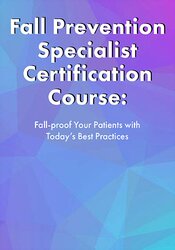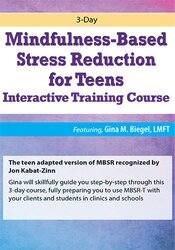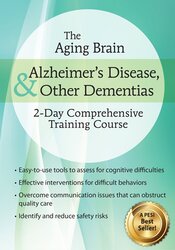Achieve more with the Spine Health and Trunk Stability: Influence of the Thorax and Respiration – Debra Dent course, priced at just Original price was: $199.99.$55.00Current price is: $55.00. on GBESY.biz! Explore our extensive collection of over 60,000 downloadable courses in Health and Medical. We offer professional, self-paced digital education at up to 80% off original rates. Start transforming your expertise now!
Salepage link: At HERE. Archive:
$199.99 $60 – Spine Health and Trunk Stability: Influence of the Thorax and Respiration – Debra Dent
An Evidence-Based Practice Solution for Spinal Health, Stabilization, & Posture
The thorax is a vital component of spinal function, as the center of trunk rotation. Its function is significant in shifting weight from lower extremities (LE) and upper extremities (UE) through regions of the spine. It is a prime base for muscle and fascial connections that affect the cervical/ UE and lumbo/pelvic/LE regions. The diaphragm’s dual functions are in posture and respiration. Its muscular and neurological connections to the lumbar spine, abdominals, and pelvic floor, along with its ability to maintain intra-abdominal pressure, are both vital for spinal stability and functional posture.
Dysfunction of the respiratory complex, trunk muscular imbalances, muscular inhibition and weakness, myofascial restrictions, loss of axial rotation, and chronic hyperventilation all have significant effects on posture, trunk stability, chronic pain, motion, and upper and lower extremity function.
This recording improves your knowledge and skill set regarding spinal health, stabilization, and posture. Ms. Dent demonstrates the vital integration of the thorax and diaphragm into a functional spinal program for long-term, successful patient outcomes. Participants will discover how normal breathing patterns are regained and maintained for spine health and overall patient well-being. Practice these techniques in an interactive, hands-on lab and leave with the confidence to immediately implement them into practice.
- Analyze clinical implications for various patient populations.
- Characterize the function of the diaphragm as it relates to posture, muscular relations, and stability of the spine.
- Evaluate musculoskeletal issues in respiratory dysfunction.
- Categorize sympathetic vs. parasympathetic responses in neuromuscular control.
- Articulate pathologies related to less than optimal respiratory function.
- Choose effective techniques to alter respiratory patterns and trunk core stability.
- Individualize education for patients with breathing pattern disorders.
Clinical Observations & Implications
- Evidence-based practice and clinical observation
- Clinical implications for patient populations
- Chronic low back and SI joint pain
- Scoliosis and trunk weakness in the elderly
- Chronic hip and lateral knee pain
- Chronic cervical pain and headaches
- Shoulder impingement
- Thoracic outlet syndrome
- Fibromyalgia
- Balance and gait deviations
- Athletic performance
- Case histories — Could this be your patient?
- Chronic pain
- Marathon runner/triathlete
- Chronic low back and neck pain
Anatomy
- Respiratory and thoracic anatomy/biomechanics
- Thoracic anatomy
- Rib anatomy
- Thoracic biomechanics
- CT junction biomechanics
- TL junction biomechanics
- Trunk musculature
- Core-inner group
- Outer group
- Posterior oblique
- Deep longitudinal
- Anterior
- Lateral
- Psoas/hamstring integration
- Scalenes, SCM, C spine muscles
- Muscles of inspiration
- Muscles of expiration
- Trunk musculature
- Mechanics of respiration
- Normal breathing-mechanical effects
- Physiology of respiration
- Lung volumes
- Lung perfusion
- Hyperventilation/alkalosis
- Fascial integration
- Thorocolumbar fascia
- Lateral femoral fascia/IT band
- Abdominal fascia
- Cervical/UE and Pelvis/LE biomechanical relationships
Neuromuscular Control
- Central nervous system on muscle tone and movement
- Sympathetic and parasympathetic responses
Lab Demonstration
- Evaluation and treatment techniques
- Evaluation of posture as it relates to respiratory function, UE, pelvis and lumbar function
- Mechanics of respiration
- Diaphragmatic, lateral costal, sternal, apical breathing
- Diaphragm position
- Seated arm raise
- Seated trunk rotation
- Standing torque
- Muscle function testing
- Supine active SLR
- Prone active SLR and active arm raise
- TA, multifidus, and pelvic floor function
- Posterior oblique system
- Anterior oblique system
- Lateral system
- Rib position and mobility testing and active mobilizations
- Length testing and lengthening techniques
- Core facilitation entry training program
- Case histories evaluations, treatments, and outcomes
Theory & Evidence-Based Practice
- Suboptimal breathing patterns
- Over-inflation
- Upper chest breathing
- Diaphragm and thoracic restrictions effects on the lumbar spine/hips/LE, C spine and UE- trunk rotation, or lack of trunk rotation effects
- Posture and flawed load transference
- Trunk stability and the diaphragm/core/incontinence
- Hypertonicity/over activation of the superficial trunk muscle
- Chronic low back and SI joint pain with poor control
- Scoliosis and trunk weakness in the elderly
- Chronic hip and lateral knee pain
- Chronic cervical pain and headaches
- Shoulder impingement issues
- Thoracic outlet syndrome
- Fibromyalgia
- Balance and gait deviations
- Athletic performance
- Respiratory alkalosis/hyperventilation and the consequences
- Chronic fatigue, fibromyalgia, chronic pain
$199.99 $60 – Spine Health and Trunk Stability: Influence of the Thorax and Respiration – Debra Dent
Invest in endless knowledge with the Spine Health and Trunk Stability: Influence of the Thorax and Respiration – Debra Dent course at GBESY.biz! Gain lifetime access to premium digital content designed to fuel your professional and personal growth.
- Lifetime Access: Unrestricted, permanent access to your purchased courses.
- Unbeatable Value: Save significantly with prices up to 80% less than direct purchases.
- Protected Payments: Complete your transactions securely.
- Empowering Skills: Learn practical, in-demand skills for immediate application.
- Immediate Download: Access your course content instantly after purchase.
- Any Device, Anywhere: Study on your preferred device with full flexibility.
Discover your next opportunity with GBESY.biz!
![GBesy [GB] GBesy [GB]](https://gbesy.biz/wp-content/uploads/2023/05/gbesy-Logo-full-100.png)
![GBesy [GB] GBesy [GB]](https://www.gbesy.com/wp-content/uploads/2023/05/gbesy-Logo-full-100.png)


 Purchase this course you will earn
Purchase this course you will earn 





Reviews
There are no reviews yet.